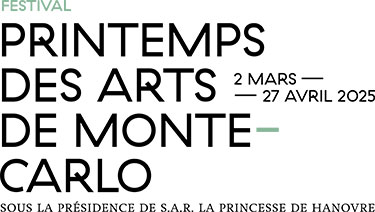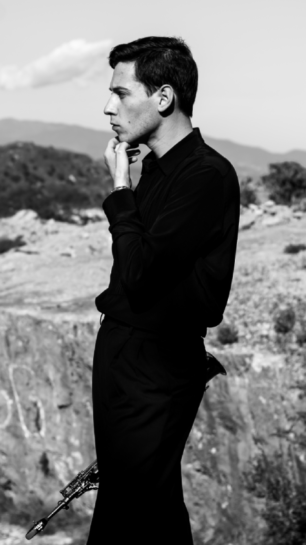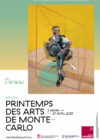A leading musician of the early Renaissance, Johannes Ockeghem was born around 1420 in today’s Hainaut Province, Belgium. Initially a singer in Antwerp, he then serviced Charles I, Duke of Bourbon, before joining the Royal Chapel of France around age 30. There, he served in turn Charles VII, Louis XI and Charles VIII until his death in 1497. We know he was in Cambrai in 1464, in Spain in 1470, in Bruges in 1484 but, in contrast with Guillaume Dufay and Josquin des Prés, Ockeghem didn’t travel much.
There is a number of unknowns concerning Ockeghem’s Requiem, the oldest one to reach our age. For a start, its date of creation remains uncertain. Was it conceived upon the death of Charles VII in 1461? Or for the funeral of Louis XI in 1483? Or at an unknown date in preparation for Ockeghem’s own death? The Déploration sur le trespas de feu Okergan (Deploration on the passing of the late Ockeghem) by Guillaume Crétin, written at the very end of the 15th century, mentions an “exquisite and very perfect” requiem mass. It was certainly a well-known piece, but the Sanctus, Agnus and Communion are missing from the only copy preserved to this day.
Throughout the mass, the composer plays on textures – alternating sections with two, three or four voices – and also on techniques, diversely revisiting the original plainsong melodies either by simple exposition in the superius part accompanied in fauxbourdon style (beginning of Introit) or through tight contrapuntal work. Graduale and Tractus are particularly dense, making the sudden homorhythmic surging of tears (“fuerunt lachrymae”) from the lush material in Tractus all the more remarkable. Although exemplifying a prima pratticain which harmony governs the melody, interspersed word painting already punctuates the discourse. As shown by the gradual drift of Tractus towards its final question (“Ubi est Deus tuus?”), Ockeghem is fond of deep tessitura. Nevertheless, flights towards high pitches tell of the eternity of light while graceful melismas highlight the glory of the heavenly Jerusalem.
In this world of contrasts, a unifying element sometimes emerges, an ascending line of four or five notes that runs through all the movements and builds the Kyrie. Besides a plainchant Sanctus excerpted from a compilation of the early Renaissance, the Ensemble Gilles Binchois chose to complement the work of their predecessor with the contrapuntal Agnus Dei and Communion drawn from the liturgies of Antoine Févin and Pierre de La Rue, two French-Flemish composers of the following generation. The first one alternates invocations with five or three voices, enriching his plainchant melody with an ascending motif and tertiary harmony, using the same interval of thirds that also generates Communion.
Woven into this vocal fabric, three less openly polyphonic pieces invite the solo saxophonist in. Rondes de printemps for soprano saxophone by Bruno Mantovani thus slide in between the Tractus and the Offertory parts of the Requiem. Despite their Debussy-sounding title, the composer denies any such direct reference. The spring in them was one brightened by the “Percheron sunshine” (in Normandy) at the time the series was written, in 2020. A careful ear will however notice the alternating pattern of fixed long-held notes and changeable sweeps, loops (reminiscent of “rondes”?) and arabesques, quite unlike Debussy’s superimposed manner in which melodic gestures animate almost immutable layers of sounds.
Finally, the concert is framed by two Sequenze by Luciano Berio, perhaps as a way of filling in with a poetic wink for that musical form which is missing in Ockeghem’s work. Indeed the sequentia of the Dies Iræ was generalised in Requiems only after the Council of Trent. The saxophone is one of the composer’s favourite instruments “because it knows how to assume various temperaments”, and his works are in themselves “sequences of gestures” as physical as they are musical, like “a kind of metamusic according to Luciano”, as the poet Edoardo Sanguineti puts it. The “Unstable and motionless” Sequenza IXb of 1980 for contralto saxophone which opens the programme is a transcription of the Sequenza IX for clarinet. Several sections play on oppositions between “reservoirs” of notes, pitches, lengths and playing modes. Long-held notes and shooting breves outline a fluctuating timescape within which multiphonics conjure a sort of meditative chorus.
The Sequenza VIIb for soprano saxophone – a 1993 transcription of the 1969 original for oboe – ends the concert on an oscillation around the pivotal note B. This starting and ending point must sound throughout the piece like a slight echo of the instrument. Trills, flourishes, repeated notes, vivid colours emerge and dissolve throughout, like a musical poetics which, again, is captured in Sanguineti’s epigraph, in subtle resonance to the preceding Requiem:
il tuo profile è un mio paessaggio frenetico, tenuto a distanza
è un falso fuoco d’amore, ché è minimo : è morto
your profile is one of my frenetic landscapes, held at a distance,
it’s a false flame of love, which is minimal: it is dead.
Anne Ibos-Augé





